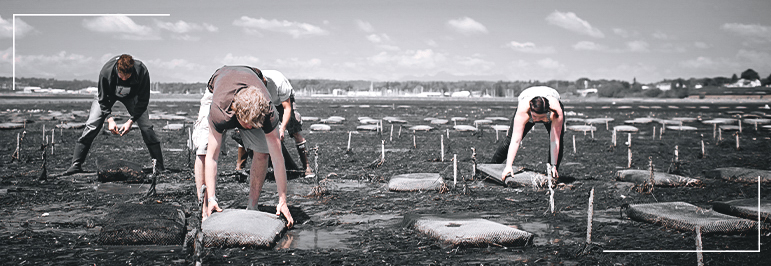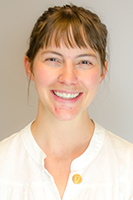Fisheries and Aquaculture Sciences

Fisheries and Aquaculture Sciences - AAS-T - WWU-NWIC Articulation
The Fisheries & Aquatic Sciences Program prepares students for employment in a variety of fisheries occupations with emphasis on the transfer articulation of credits to Western Washington University (WWU) & Northwest Indian College (NWIC) from Bellingham Technical College (BTC).
The program offers an Associate of Applied Science Transfer degree to the WWU BA in Environmental Studies and BA in Geography. The Fisheries and Aquatic Sciences Program gives students experience in biological studies with state and private agencies.
Students work with smolt traps, spawner surveys, data collection, scale and otolith samples, and water quality. This field experience provides practical work for the instructional “laboratory.” These valuable experiences compliment the classroom theory and related instruction components.
The program operates in partnership with regional, tribal and statewide industries as well as Regional Enhancement Associations.
Employment Information
Data are provided on a program (not credential) level
66%1 / 77%3 BTC graduate placement rate
$43,852 starting annual wage2
$52,020 average annual wage2
$64,445 potential annual wage2
Estimated Program Costs
Entry Information
When Can I Start?
This program typically starts in Fall Quarter on a space available basis.
What are the Minimum Entry Requirements?
Admissions application and assessment testing in Reading, Math and Writing is required. Your score on the test and/or your previous transcripts will determine where you begin your course sequence. Contact Admissions at 360.752.8345 or at admissions@btc.edu for assistance with academic planning.
What are My Next Steps?
Classes
Total Program Credits: 90
Total Program Credits: 90
Quarter 1
AQUA 100 Intro to Fisheries and Aquaculture 2 CR AQUA 110 Water Quality 3 CR AQUA 120 Aquatic Biodiversity 3 CR AQUA 130 Reproduction 2 CR AQUA 135 Hatchery Practicum I 4 CR Quarter 2
MATH& 107 Math in Society 5 CR OR Higher AQUA 140 Growth and Nutrition 3 CR AQUA 150 Fundamentals of Aquaculture 3 CR AQUA 165 Aquaculture Practicum 3 CR AQUA 190 Toxicology and Diseases 3 CR Quarter 3
AQUA 160 Fundamentals of Fisheries Biology 3 CR AQUA 170 Freshwater Ecology 3 CR AQUA 180 Oceanography 3 CR AQUA 195 Fisheries Practicum 4 CR Quarter 4
CMST& 210 Interpersonal Communications (recommended) 5 CR OR CMST& 220 Public Speaking 5 CR OR PSYC& 100 General Psychology 5 CR OR SOC& 101 Introduction to Sociology 5 CR ENGL& 101 English Composition I 5 CR OR ENGL& 102 English Composition II 5 CR AQUA 200 Genetics in Fisheries and Aquaculture 3 CR AQUA 210 Hatchery Practicum II 3 CR Quarter 5
AQUA 250 Advanced Sampling Techniques 4 CR AQUA 260 Natural Resource Management 4 CR BIOL& 160 General Biology with Lab 5 CR Quarter 6
CHEM& 121 Introduction to Chemistry 5 CR AQUA 270 Introduction to GIS for Fisheries & Aquaculture 4 CR AQUA 290 Advanced Hatchery Techniques 2 CR Five Credits from the AAS-T Acceptable Transferable Courses list. 5 CR
Program Outcomes
Students who successfully complete the AAS-T degree in Fisheries & Aquatic Sciences, will be able to:
- Demonstrate competency in biological studies and apply appropriate techniques to conduct studies and sample data.
- Demonstrate competency in Habitat Restoration evaluation methods and apply techniques to improve and restore habitat.
- Demonstrate competency in field research, stream surveys, tag studies, spawning assessments, and smolt trap projects.
- Sample scales, otoliths, water quality, migrating smolts, and spawning adults in the field.
Employment Outlook
You can put your education to work. Skilled fisheries workers with AAS-T and AAS degrees are needed by employers such as the Washington Department of Fish and Wildlife and the U.S. Fish and Wildlife Service, as well as private hatcheries, shellfish farms, enhancement organizations, salmon operations, and federal and private scientific companies. The employment outlook for program graduates is very strong, and students can expect to earn excellent wages.
The average annual wage in this field is $45,521, with an earning potential of about $57,231 per year.*
Program graduates work as fish hatchery specialists, fish culturists, fisheries technicians, shellfish hatchery workers, and scientific aides.
Faculty & Support

Brittany Palm

